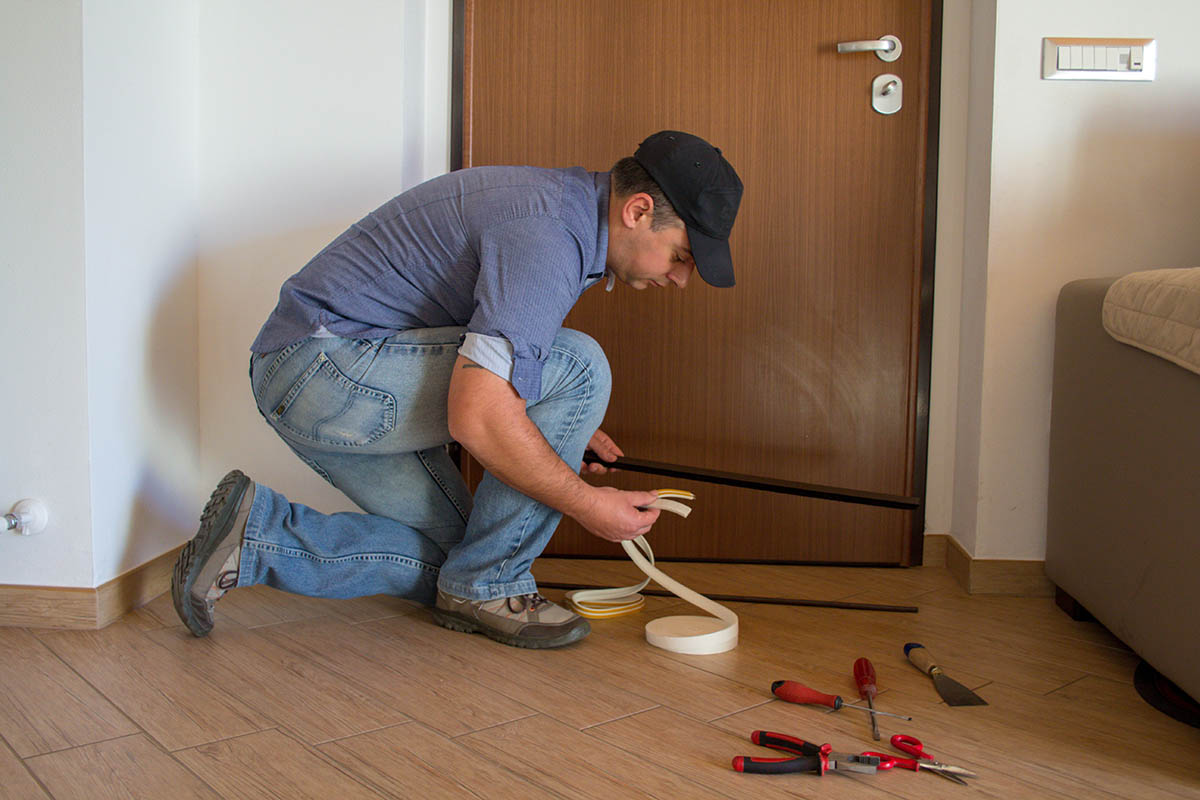Proper entry door insulation is essential for maintaining energy efficiency and keeping your home comfortable throughout the year. Signs that your door may need replacing include drafts, visible cracks, or difficulty closing it properly. If you notice increased energy bills or consistent temperature fluctuations near the entryway, it might also be time to consider an upgrade.
New, insulated doors can provide better sealing and long-term savings while enhancing the appearance and security of your home. Call Master Seal at 855.608.1580 or connect with us online for expert door installation services, to schedule a consultation, or to browse our selection of entry door styles and features.
How to Insulate an Entry Door to Save on Energy Bills
Insulating your entry door is an effective way to reduce energy loss and save on energy bills. Here’s a list of steps to help you get started:
Inspect for Gaps and Cracks
Begin by examining the door frame and edges for any visible gaps or cracks where air might be leaking. Look for drafts using a lit candle or a piece of tissue paper held around the door while it’s closed.
Install Weatherstripping
Apply weatherstripping along the edges of the door to create a tight seal. Adhesive-backed foam, rubber, or vinyl weatherstripping is easy to install and prevents air infiltration.
Add a Door Sweep
Attach a door sweep to the bottom of the entry door to seal any gap between the door and the floor. This helps block drafts and keeps warm air inside during colder months.
Seal Around the Door Frame
Use caulk to seal any cracks or gaps around the door frame. Choose a caulk that is specifically designed for exterior use to withstand weather changes and maintain durability.
Upgrade the Door Material or Core
If your entry door is old or made of an inefficient material, consider replacing it with an energy-efficient door. Look for doors with insulated cores or those certified by ENERGY STAR® for the best thermal performance.
Install a Storm Door
Adding a storm door can provide an extra layer of insulation and protect your entry door from harsh weather elements, further reducing energy loss.
By taking these steps, you can ensure your entry door is properly insulated, keeping your home comfortable year-round and lowering your energy costs.
Knowing When It’s Time for an Upgrade
While there’s plenty you can do yourself to insulate your entry doors, sometimes it’s just time for a replacement. If you’re unsure whether your entry door needs to be replaced, watch for these key signs:
- Visible damage or wear – Cracks, dents, or warping in your door not only diminish its appearance but also reduce its effectiveness in providing insulation and security.
- Difficulty opening or closing – If your door sticks, creaks, or doesn’t open and close smoothly, it could be due to structural issues or warping caused by age or weather exposure.
- Drafts coming through – Feeling a draft near your entry door is a clear indication of compromised insulation, leading to energy loss and higher utility bills.
- Condensation between glass panes – If your door has glass inserts or windows and you’re noticing condensation or fogging, it could mean the seal is broken, and the door is no longer energy efficient.
- Outdated design – An old, outdated door may not match the aesthetics of your home, as modern entry doors come in a variety of styles and finishes while offering better energy efficiency.
- High energy bills – If your energy costs are unusually high, your entry door might not be properly insulating your home, allowing air to escape and forcing your HVAC system to work harder.
Replacing an old or inefficient entry door can rejuvenate your home’s appearance, enhance energy efficiency, and improve security. If you’ve noticed one or more of these signs, it may be time to consider an upgrade.
Choose Master Seal for Entry Door Installation
At Master Seal, we specialize in providing high-quality entry door installation services that combine durability, style, and energy efficiency in Baltimore and surrounding areas. Our team of experienced professionals ensures a seamless installation process tailored to meet your home’s unique needs. Trust Master Seal to enhance your home’s curb appeal and security with our top-of-the-line products and exceptional service. Schedule your consultation at 855.608.1580 or online today.








